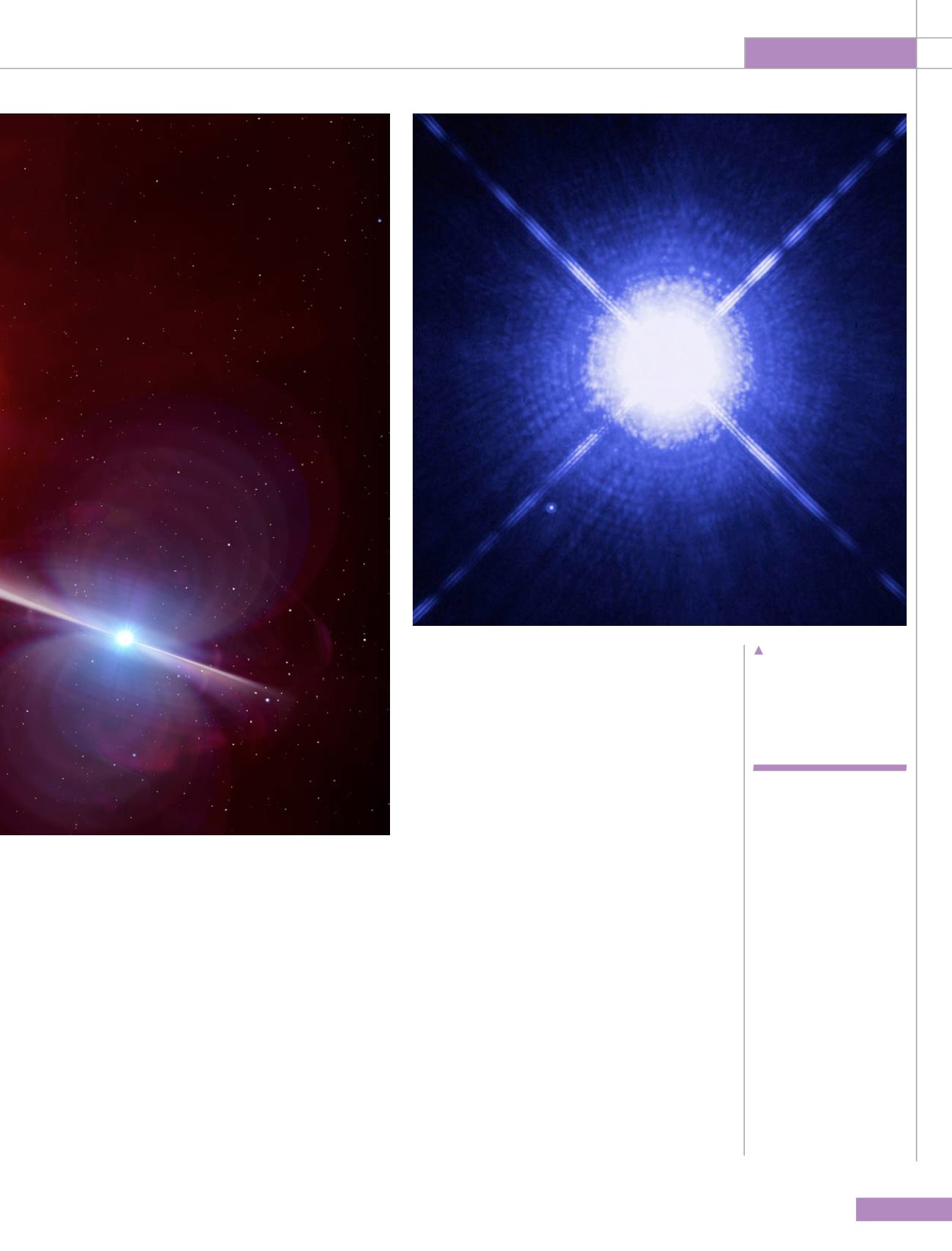
ROOM
85
Space Environment
White dwarf Sirius B is
dwarfed by its brilliant
blue-white binary
companion Sirius, the
Dog Star.
Eclipsing binaries tell us stellar masses and radii
to an accuracy of a few percent, thus they are vital
to understanding the inner workings and evolution
of all stars. In the 21st century, binary stars
continue to drive the cutting edge of astrophysical
discovery, for example white dwarfs in binary stars
explode as type Ia supernovae and confirm that
the Universe is accelerating its expansion.
Not only that, but the latest surveys of very massive
stars tell us that most of them are binaries and half
of them interact severely during their lifetimes. We
have seen binary stars and binary black holes merge
in real time. With upcoming bigger and better surveys
of the sky, binary stars remain a vital pillar of modern
astrophysics and a laboratory for testing extreme
physics which remains inaccessible on Earth.
Stellar birth
Structure in our Universe forms when matter
collapses under its own gravity. Stars form, for
example, when giant clouds of gas collapse,
compress and hydrogen is eventually fused in their
cores. The energy released by this nuclear fusion
energy halts the collapse and is radiated at the
stellar surface, to give the distinct, bright, point-
like source we identify with far-off stars. Often,
however, if a gas cloud has sufficient mass and
spins rapidly enough, or if it becomes involved in
gravitational interactions with other young stars in
the gas cloud, some stars are gravitationally bound
to a companion star when they are born. These are
the binary star systems. In any binary system, we
label the more massive star the primary and the
less massive the secondary star.
Typically, we can identify secondary stars
with around 10 percent or more of the mass of
the primary. Very low mass secondary stars are
simply invisible against the light of the usually
much brighter primary. Sometimes, because stars
in binaries can interact by exchanging mass, the
secondary is brighter. The Algol system located
in the constellation of Perseus is a good example
of such a star system. Its variability in brightness,
which eventually led to the discovery that it was
Binary
stars are
particularly
crucial to our
understanding
of the Universe
M. Garlick/University of Warwick, ESA/Hubble
HST/NASA/ESA/Bond (STScI)/Barstow (University of Leicester)


